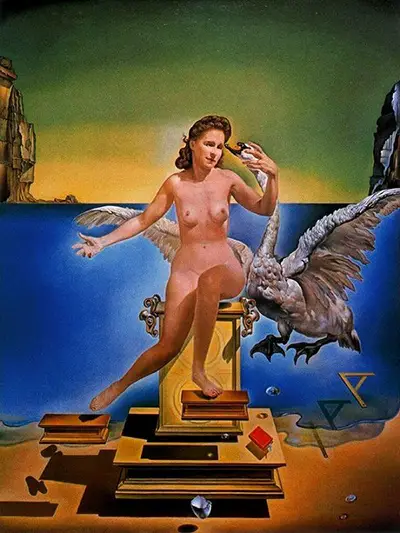Leda
The image shows Dali's interpretation of the Leda and the swan tale from the Greek myths. In the original story Zeus, father of the gods, falls in love with Leda, a mortal. She rejects him and marries Tyndareus instead.
On the night when she consummates her marriage with Tyndareus Zeus takes her in the guise of a swan. As a result she gives birth to two eggs, each containing twins. The first hatches Castor and Pollux and the second Helen and Clytemnestra.
Dali's image shows Leda seated almost caressing the swan behind her. The shadowless swan is an ethereal presence, dominated by Leda. The model for Leda was Gala (Dali's wife and muse) and the picture is an exultation of her.
Nuclear Physics
Art and nuclear physics are not the most obvious bed fellows, but Dali brings them together in Leda Atomica.
Painted in 1949, with the shadows of Hiroshima still cast across the collective memory, this work shows an enthusiasm and interest in the exploration of what was then an incredibly modern science.
It is striking that within such an intimate and almost tender portrait everything is in isolation- nothing touches, even the sea does not touch the sand. This is symbolic of 'suspended space', where at an atomic level nothing touches.
Divine Mathematics
This is not the only symbolism in the image though, there are many other striking features that point towards Dali's belief in composition and calculation. Dali used the work of Romanian mathematician Matila Ghyka to create the harmony of the framework for the image.
Following this framework Leda is placed within a pentangle and a pentagon. to the right there is a set square, all suggestive of Dali's belief that maths was not a distraction from art but rather a framework for it.
Typically Dali, Leda Atomica remains a challenging and contemporary image. Its use of symbolism is both thought provoking and indicative of the changing world Dali was living through.

